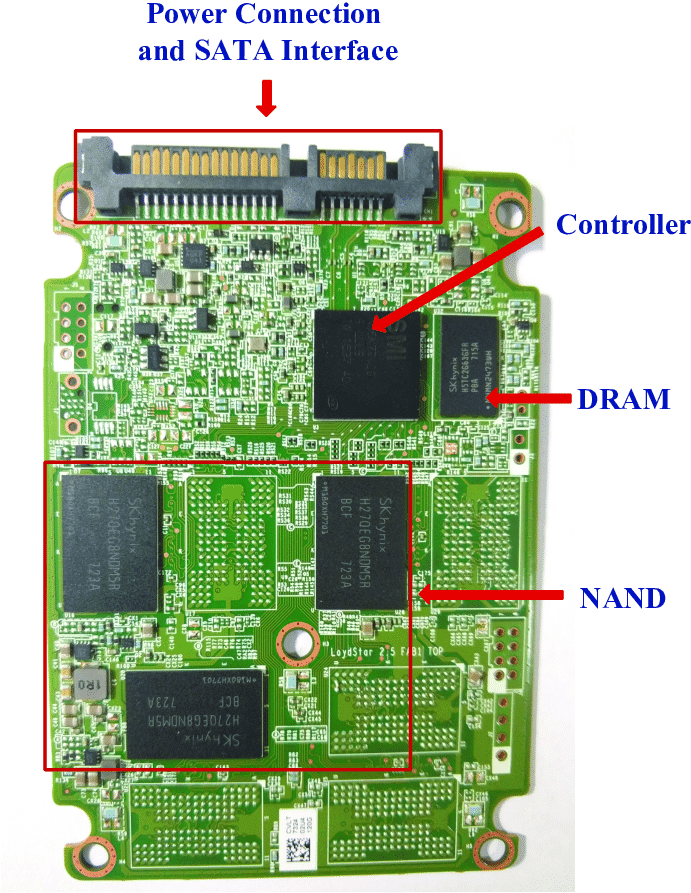Which type of SSD last longer? The lack of moving parts makes solid-state drives more durable and reliable than traditional hard disk drives. A storage device will eventually fail as a result of wear and tear, power surges, and manufacturing defects.
What are the factors that can affect SSD’s lifespan?
That being said, A few factors that may affect an SSD’s lifespan:
- Type of SSD: There are several different types of SSDs, including SATA, M.2, and NVMe, and each type has its own set of characteristics and potential lifespan. In general, newer technologies like M.2 and NVMe tend to have longer lifespans than older technologies like SATA.
- Type of memory: SSDs use different types of memory, including single-level cell (SLC), multi-level cell (MLC), and triple-level cell (TLC). SLC memory is more expensive and has a longer lifespan, while MLC and TLC are less expensive but have shorter lifespans.
- Write endurance: SSDs have a limited number of write cycles, meaning they can only handle a certain amount of data being written to them before they start to degrade. SLC memory generally has a higher write endurance than MLC and TLC, so it may last longer in terms of write cycles.
- Quality of the SSD: SSDs are not all created equal. Some are more reliable than others because they are built with higher-quality components. High-quality drives may last longer than low-quality drives.
- Conditions of use: The way an SSD is used can also affect its lifespan. For example, if the drive is constantly subjected to high temperatures or vibration, it may not last as long as a drive that is used in more favorable conditions.
- Treatment of the drive: Proper care and maintenance can also help extend the life of an SSD. This includes keeping the drive clean, avoiding rough handling, and keeping the firmware up to date.
Straight Answer
It’s difficult to determine which type of SSD will last the longest because there are so many variables at play. In general, SSDs with SLC memory may have a longer lifespan. But SLC memory SSDs are not available in the market. SSDs are available only with TLC memory with different names like (3D NAND, V-NAND..etc.,) Branded company TLC memory and higher-quality components may have a longer lifespan but it’s always a good idea to back up your data regularly to protect against data loss.
Type of Memory
The considerable range in the lifetime of an SSD is related to different storage technologies:
- Single-level cell SSDs: (SLC) have a particularly long life, although they can only store 1 bit per memory cell. They can withstand up to 100,000 write cycles per cell and are particularly fast, durable, and fail-safe.
- Multi-level cell SSDs: (MLC) have a higher storage density and can store 2 bits per flash cell. They are more cost-effective than the SLC type but can only tolerate up to 10,000 write cycles per cell.
- Triple-level cell SSDs: (TLC) can hold 3 information bits per memory cell. However, at the same time, life expectancy can drop to 3,000 memory cycles per cell.
- Quad-level cell SSDs: (QLC) accommodate 4 information bits per cell. Reduced costs, more storage capacity, and higher storage density are also associated with a shorter service life with this type of device. Manufacturers usually only guarantee 1,000 write or erase cycles per cell.
Although the range in SSD life spans is considerable, all SSD types have a sufficiently high life expectancy with moderate use (with some limitations, including for QLC SSDs).

Estimating terabytes written (TBW)
Usually, manufacturers give an estimate with the so-called terabyte(s) written (TBW). Because of the fact that by using Wear-Leveling the data will be distributed evenly over all cells, this figure is supposed to tell how much data can be really written in total on all cells inside the storage chips and over the whole life span.
A typical TBW figure for a 250 GB SSD lies between 60 and 150 terabytes written. That means: To get over a guaranteed TBW of 70, a user would have to write 190 GB daily over a period of one year. In a consumer environment, this is highly unlikely.
SSD lifespan is even longer than they promised
According to the most recent estimates, the age limit for SSDs is around 10 years, though the average SSD lifespan is much shorter. Google and the University of Toronto collaborated on a multi-year study that tested SSDs. It was discovered that the age of the SSD was the primary determinant of when an SSD failed. The study also discovered that SSDs were replaced approximately 25% less frequently than HDDs.
My Suggestion
Best NVMe SSD

Best SATA SSD


